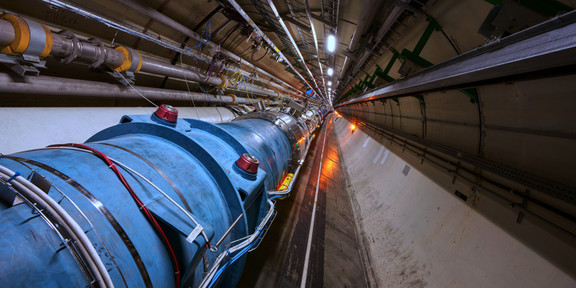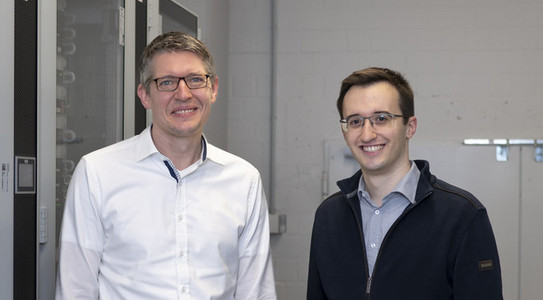TU Physicists Measure Rare Decays
- News
- Research

At the Large Hadron Collider (LHC), the world's most powerful particle accelerator, researchers from all over the world are investigating the decays of particles produced in high-energy collisions of protons. The international LHCb collaboration has now published new findings on the extremely rare decay of a Bs particle into two muons in two renowned scientific journals. The results strengthen the standard model of particle physics. Prof. Johannes Albrecht from the Department of Physics at TU Dortmund University and his doctoral students Titus Mombächer and Maik Becker were involved in the publications.
At the LHC, packets of protons are accelerated to almost the speed of light in a ring-shaped, approximately 27-kilometre-long tube under the earth and brought to collision. Billions of elementary particles are created in the process. Gigantic detectors record their tracks, their energy and their decay. The data are also analysed by the Dortmund physicists. The aim is to find possible extensions to the Standard Model of particle physics. The measurement now published is based on a total of six years of data recording at the LHC between 2011 and 2018, and thus includes and summarises the previous results before the LHC is restarted this year after a technical stop lasting several years and a new period of data recording begins.
The two publications deal with the decay of a Bs particle, which consists of a quark and an antiquark, into two muons, i.e. heavy variants of the electron. According to the standard model, only about three out of a billion Bs particles should decay in this way. For this reason, very large amounts of data are needed to measure the decay precisely. The LHCb collaboration reports the most precise measurement of the decay rate by a single experiment to date.
The researchers determined the relative abundance of the Bs decay and also calculated the upper exclusion limit for the rate of decay of other similar particles - namely the B0 meson, which according to the Standard Model is smaller by a factor of 30, as well as a related variant of the Bs decay in which a photon is also emitted. "It turned out that within the achieved precision, all measurements are compatible with the standard model," Prof. Albrecht summarises the results. "This severely limits the possibilities for extensions of the Standard Model."

Within the LHCb collaboration, the measurement was carried out in a large team with researchers from Germany, England, Italy, the Netherlands and Switzerland. The Dortmund working group of Prof. Johannes Albrecht has made significant contributions to the current and previous measurements of these decays over the past nine years. The current findings have been published in the journals Physical Review Letters and Physical Review D. Both articles were awarded "Editors' Suggestion" by the journals.
To the publications:
Contact person for queries:










